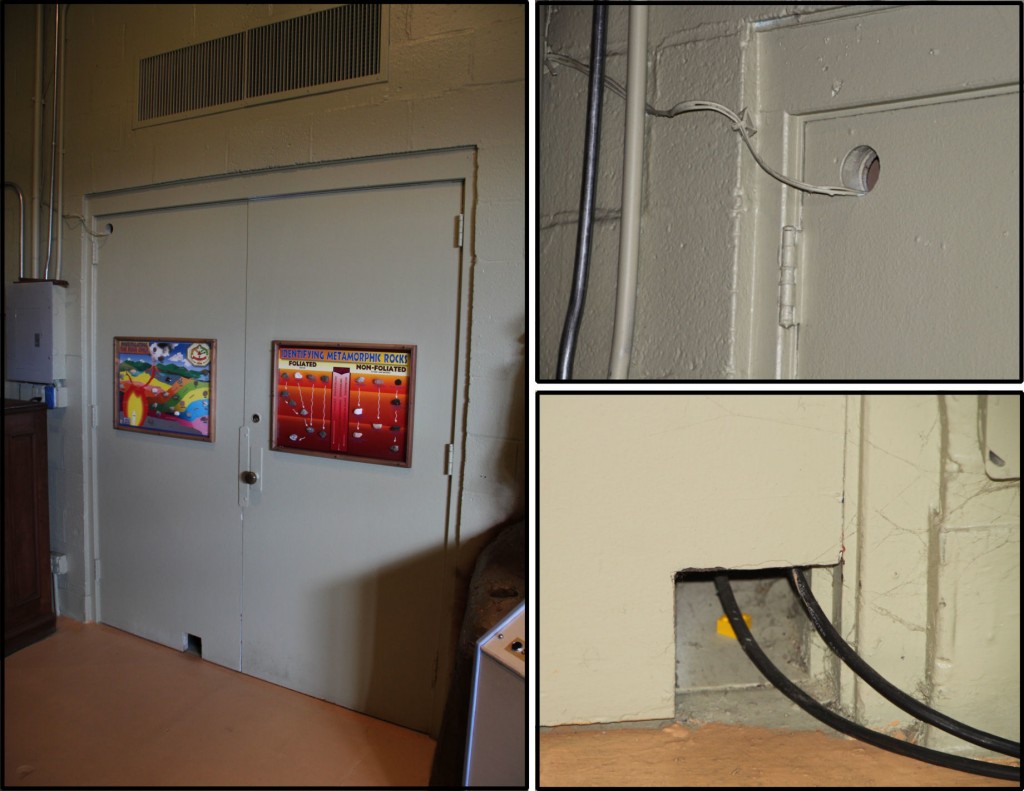These doors are from the same children’s museum as the planetarium exit doors in the previous post. I first noticed the “mouse hole” at the bottom of one pair, and wondered why it was there, until I saw multiple other holes with wires running through.
I don’t know if these doors were originally fire-rated; the holes would obviously void any rating. IF they were fire doors, NFPA 80 requires that any rated doors or windows that are no longer needed must be removed and filled with construction equivalent to the wall construction. This is because the rating of a door is typically lower than the surrounding wall, because the door would not have the same fuel load as the wall.
For example, a corridor wall may have a 1-hour rating and a corridor door a 20-minute rating. The corridor wall could have furniture, stored materials, etc. placed against it, and an operable door would not. If the door is no longer in use and could potentially have an increased fuel load, it needs to be able to perform like the wall would. Not too long ago I was searching a hospital for a specific door and finally found it behind a giant bookcase!
Here’s the text from NFPA 80 2007, 2010:
5.1.2 Removal of Door or Window. Where a door or window opening is no longer in use, the opening shall be filled with construction equivalent to that of the wall.
And some additional information from Annex A of NFPA 80 2007, 2010:
A.5.1 Walls with openings have less fire resistance than unpierced walls. Fire doors, shutters, and fire windows are designed to protect the opening under normal conditions of use, with clear spaces on both sides of the opening. Where the opening is not used and combustible material could be piled against or near the door, window, or shutter, the designed protection cannot be expected.
You need to login or register to bookmark/favorite this content.








Leave A Comment